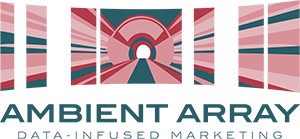Effective advertising hinges on the strategic collection and analysis of data. This systematic approach enables marketers to make informed decisions, optimize campaigns, and deliver personalized experiences that resonate with target audiences. This article explores the multifaceted methods used in the digital advertising ecosystem to gather, process, and leverage data for maximum impact.
Harnessing Diverse Data Sources
The foundation of effective digital advertising lies in accessing and integrating multiple data streams:
First-party data has become increasingly valuable in a privacy-conscious world. This information, collected directly from audience interactions with owned platforms, provides authentic insights into user behavior patterns and preferences. Website analytics, app usage data, and CRM systems all contribute to this valuable resource.
Remarketing tools such as Google Ads and Facebook Pixel have revolutionized follow-up strategies by enabling advertisers to reconnect with previous site visitors. These technologies track user interactions and allow for tailored messaging based on specific pages visited or actions taken.
Audience segmentation transforms raw data into actionable insights by categorizing users into distinct groups. Whether segmented by demographics, behavioral patterns, or purchase history, these divisions enable precise targeting and personalized communication strategies that dramatically improve engagement rates.
Consumer insights gathered through surveys and direct feedback mechanisms provide qualitative context to quantitative data, helping advertisers understand the “why” behind consumer actions and preferences.
Google Analytics: The Cornerstone of Digital Measurement
Google Analytics stands as the industry standard for website and digital campaign measurement, offering comprehensive insights into user behavior and performance metrics:
The platform provides a robust framework for tracking user journeys, from initial touchpoints through conversion. By implementing tracking codes across digital properties, advertisers gain visibility into traffic sources, page performance, and user flow patterns that inform optimization strategies.
Behavioral metrics such as bounce rate, session duration, and pages per visit offer critical context about content engagement and user experience. These indicators help identify potential friction points in the conversion funnel and opportunities for enhanced user experience.
Goal tracking capabilities allow marketers to define and monitor specific conversion actions—from form submissions to product purchases—providing concrete measurement of campaign effectiveness and ROI. Custom event tracking extends this functionality to monitor micro-conversions and user interactions that signal engagement.
Enhanced ecommerce features deliver granular insights into product performance, shopping behavior, and checkout processes. This detailed view of the purchase journey enables precise optimization of product pages, promotional strategies, and checkout experiences to maximize conversion rates.
Google Analytics 4, the latest iteration, emphasizes event-based tracking and leverages machine learning for predictive analytics, offering more sophisticated audience insights and cross-platform measurement that addresses evolving privacy requirements and multi-device user journeys.
Competitive Intelligence and Market Research
No advertising strategy exists in isolation. Understanding the competitive landscape provides crucial context for data interpretation:
Competitive analysis involves systematically examining competitors’ digital presence, messaging strategies, and market positioning. This intelligence helps identify gaps in the market, potential differentiation opportunities, and emerging trends before they become mainstream.
Qualitative research methods such as secret shopping experiences and focus groups provide deeper contextual understanding of consumer expectations and experiences. These approaches reveal nuances in customer perception that might not be captured in quantitative data alone.
Data Integration and Analytics Implementation
The true power of data emerges when disparate sources are unified into a coherent analytical framework:
Cross-platform data integration allows marketers to track customer journeys across multiple touchpoints. By connecting interactions across websites, social media, email, and other channels, advertisers gain a holistic view of the customer experience.
Advanced analytics tools transform raw data into actionable intelligence through predictive modeling, machine learning algorithms, and visualization techniques. These capabilities enable advertisers to identify patterns, forecast trends, and optimize campaign parameters in real-time.
Attribution modeling addresses the challenge of determining which touchpoints most significantly influence conversion. By understanding the relative impact of different channels and messages, advertisers can allocate resources more effectively and maximize return on investment.
This integrated approach to data collection and analysis enables digital advertisers to craft resonant messages, optimize media strategies, and make data-driven decisions that enhance campaign effectiveness and drive measurable results in an increasingly competitive digital landscape.
***
To get a #ProfessionalGradeMarketing team working for you, contact Ambient Array today.


